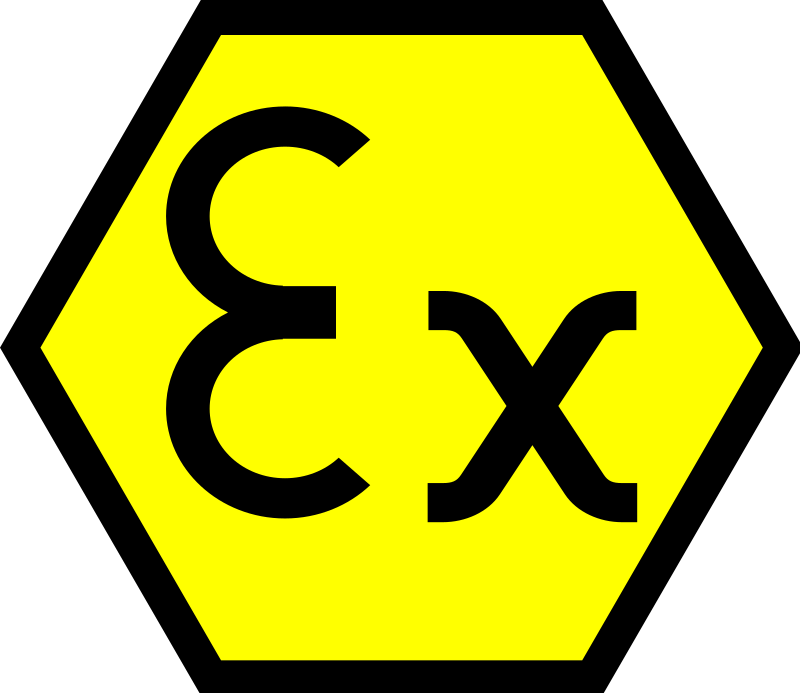
Electrical equipment suitable for combustible dust risk areas :
certification and requirements
Risks associated with electrical equipment in dust ATEX areas
Question or remark ? Please contact us at admin@powderprocess.net
| Section summary |
|---|
| 1. Introduction |
| 2. Equipment
design and certification |
Electrical equipment used in areas where a dust explosion risk exist must be designed and certified according to the relevant local norms, for example ATEX norm or IECEx. This page is explaining how to confirm an electrical equipment is suitable for use in the presence of combustible dust according to the ATEX norm (Europe).
1. Introduction
What are the risks related to electrical equipment in ATEX zones ?
Electrical equipment are necessary for the process, it includes motors, instrumentation, load cells, control cabinet...etc... It happens that such equipment have often to be positioned within an ATEX zone. In order to be safe, such electrical equipment must have a specific design.
In case of damage, electrical equipment can generate sparks at
electrical connections which, if they enter in contact with a dust
cloud, can ignite
the powder and create an explosion. Some equipment, like
motors, can also generate
heat that could be high enough to make the dust burn.
2. Equipment design and certification
How to know an electrical equipment is compliant for use in ATEX (dust) zone ?
In order to be used in a zone susceptible to have a dust cloud, the electrical equipment must be dust tight. According to the resistance to dust ingress, it will be certified either for zone 20, 21 or 22.
Typically IP5x (zone 22 for non conductive dusts) and IP6x (zone 20 and 21, and zone 22 for conductive dust) equipment will be used in those areas. Those standards should guarantee no dust infiltration in enclosure or at cable glands. Knowing the IP rating is necessary but not sufficient for qualification in ATEX zones, the equipment installed or modified after 2003 MUST be marked with the Ex sign and must comply with the ATEX zone in which they will be used.

Figure 1 : the ATEX mark
A typical plate of an equipment will have the following information on it :

Figure 2 : how to read an ATEX label ?
Top
5 Most Popular
1.
Pneumatic transport design guide
2. Ribbon
blenders
3. Powder mixing
4. Hoppers design guide
5. Measuring degree of
mixing
----------------
Top 5 New
1. Continuous Dry Mixing
2. Mixing speed
3. Mixer cycle time
optimization
4. Batch
/ continuous mixing comparison
5. Energy Savings
The suppliers must also indicate the maximum surface temperature of the equipment. In any case, this maximum temperature must be lower than the MIT and SIT of the powder that can come in contact with the electrical equipment.
Many parameters have to be taken into considerations to certify an equipment, but basically the logic behind the protection against dust explosion is to avoid the ingress of the dust in the equipment, and make sure it will not overheat to hazardous levels.
The maintenance must also be perfect to keep the equipment compliant over time.
Note that there are also other types of ATEX protections that can be used : pressurization, intrinsic safety or molded compounds. These are more specialized applications.
The zoning definition and the rating and maximum temperature of the electrical equipment to be used in those areas, must be described in the ATEX risk analysis and the measures to put in place explained. Conclusions of the risks analysis must be implemented by the factory.